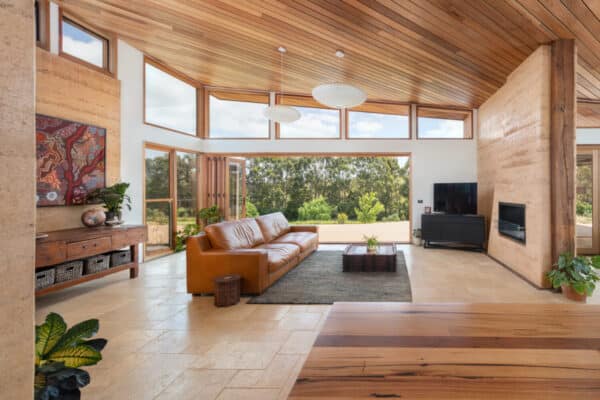Plants naturally grow upwards and around things, and over the last decade humans have started to recreate this on commercial city buildings with ‘vertical gardens’.
The concept of vertical gardens was invented by French designer Patrick Blanc, also a scientist and botanist.
In the current climate crisis, vertical gardens are a growing symbol of sustainability, bringing nature into people’s lives in the city.
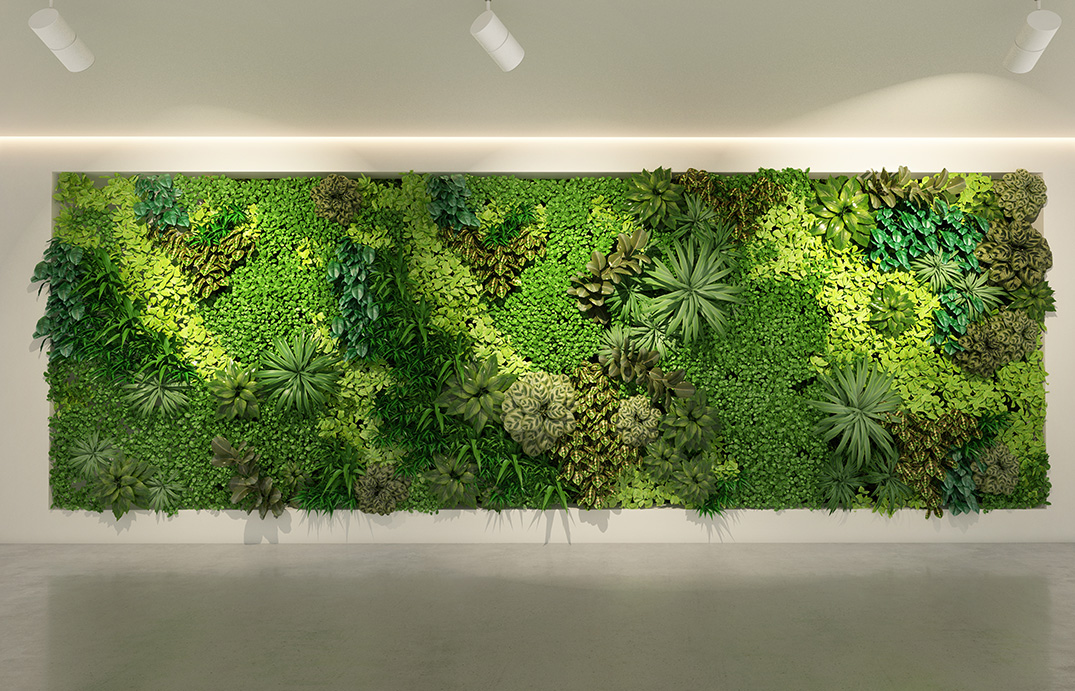
Aside from the visual benefits, vertical gardens are mentally and physically beneficial to humans and the environment. Below are some of the most famous vertical gardens from around the world.
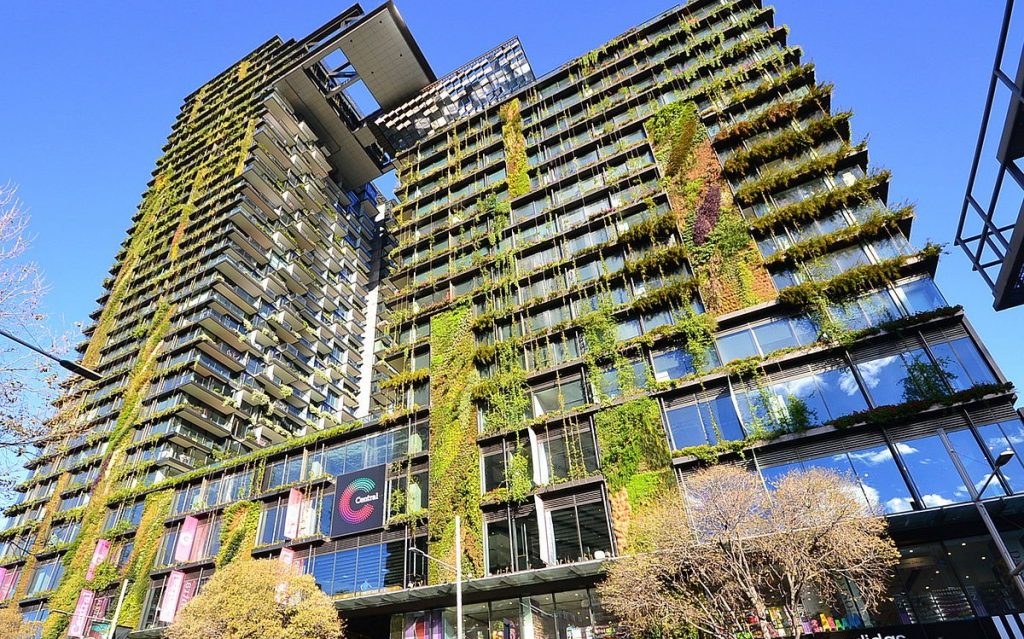
Image via Wikipedia
‘The World’s Tallest Vertical Garden’ – One Central Park, Sydney Australia
If you’ve been to Sydney CBD, it’s hard to miss the iconic residential towers covered in plants, which grace the busy otherwise grey looking buildings. The towers of One Central Park were designed by Parisian architect Jean Nouvel and botanist Patrick Blanc, and prove the diversity that gardens could be in the city.
“One Central Park is a striking reminder that nature can thrive in the city.” – Central Park Sydney website, 2018
The Indigenous and exotic plants that cover the buildings are not only for show, they symbolise the buildings commitment to sustainability and the environment. The building has exceptional environmental standards, on-site water recycling and green (low carbon) energy sources. One Central Park is a showcase for what should be the future for city living.
To learn more about One Central Park’s sustainable energy, read here.
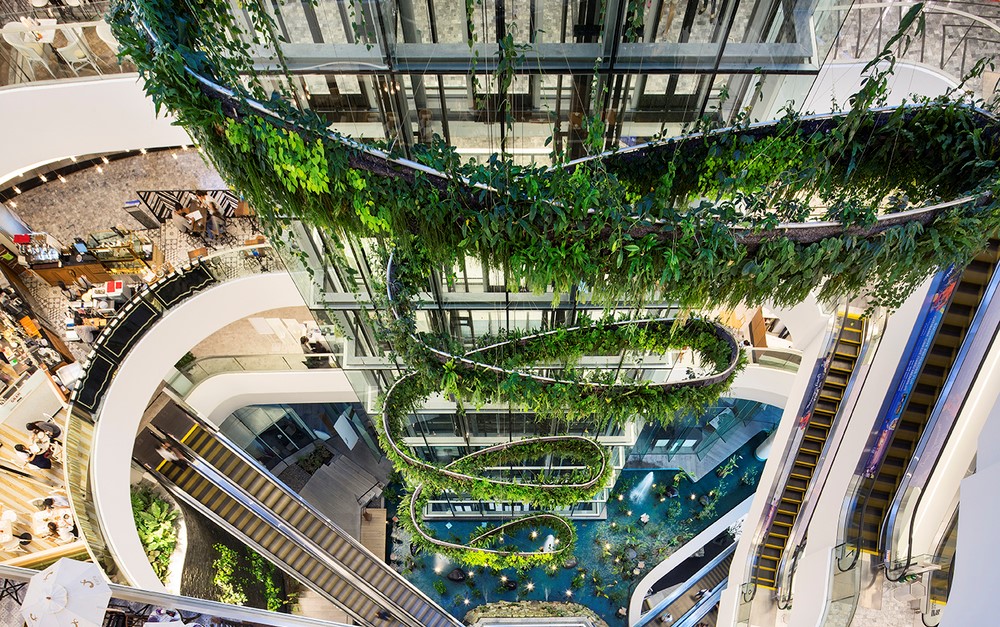
Image via Boiffils
‘The Rainforest Chandelier’ – Emquartier, Bangkok Thailand
Another vertical garden designed by French botanist Patrick Blanc – Emquartier, Bangkok. The chandelier suspended garden is made up of two elegant spirals consisting of ferns and tropical plants on wires. The 100-metre long garden is surrounded by other nature themed designs, including flowing water pools and other trees. Patrick Blanc is the father of vertical walls, previously a scientist and since a designer of man-made green walls.
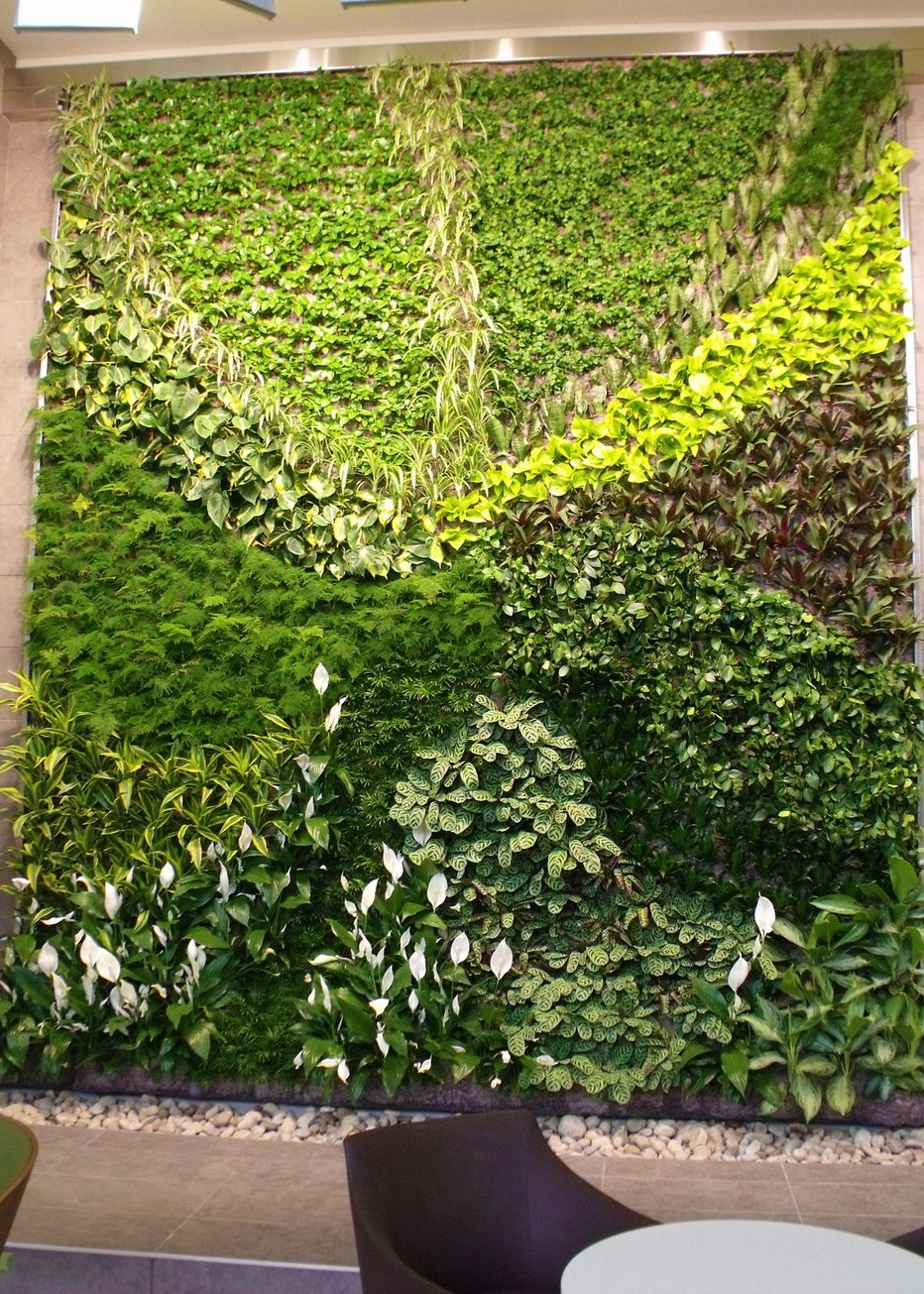
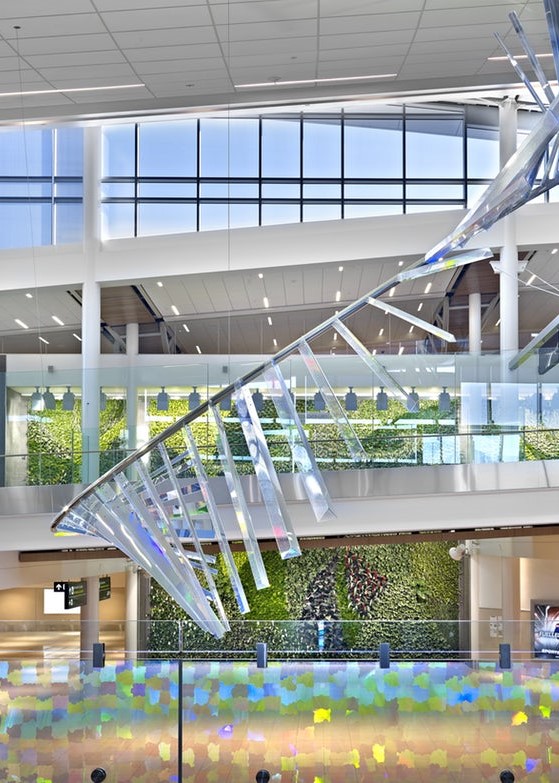
‘Airport Green’ – Edmonton International Airport, Canada
If there’s ever a place that needs living walls of plants, it’s airports. The airport terminal project showcases Edmonton’s dedication to sustainable design, being on the largest living walls in Canada. The piece is a focus of the airport, seen by both arriving and departing passengers. The wall covers approximately 1,120 square feet, containing up to 8000 individual plants of 32 species.
‘The National Aeronautics and Space Administration (NASA) did a number of studies to find the most efficient way to remove toxins up on space stations and found that indoor plants were more efficient than mechanical air filters.’ – Fly EIA website, 2018
The wall is also mechanically looked after, with mechanical scissors that trim the plants and automatic drip watering. The thousands of plants in the airport are scientifically proven to remove indoor pollutants and provide oxygen to the terminal. The designer Mike Weinmaster studied botanical research and Environmental Engineering and Infrastructure.
Images via New Atlas
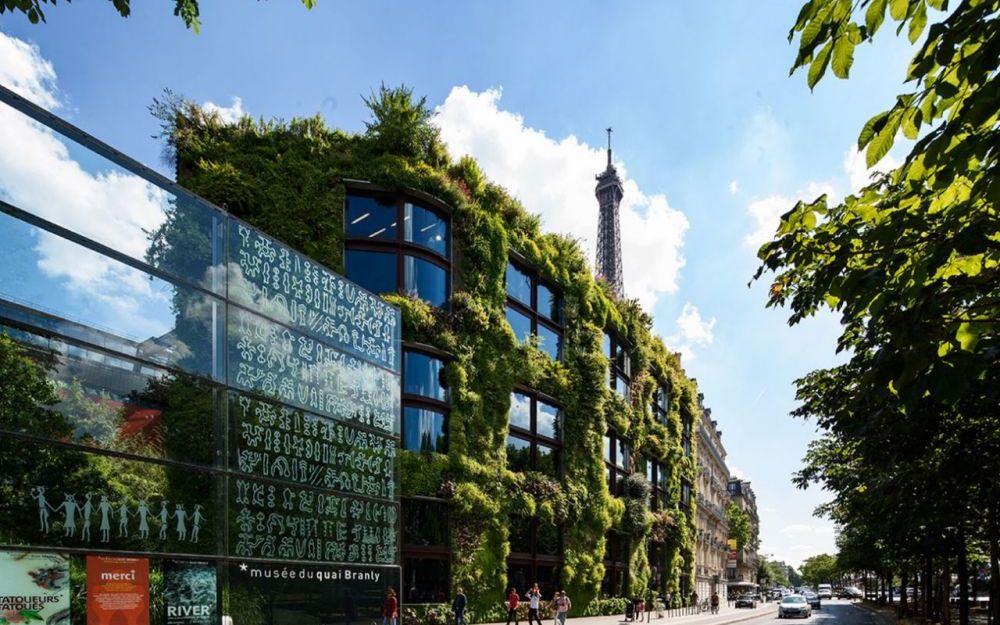
Image via Le Parisien
‘The Original’ – Quai Branly Museum, Paris France
Before One Central Park in Sydney was designed, architect Jean Nouvel and Patrick Blanc created the living wall next to the Eiffel Tower in Paris. The wall finished in 2004 covers The Musee du quai Branly – a museum that features indigenous art and cultures. The wall covers 800 square meters and consists of 15,000 plants from 150 species. The method that the plants are held into place is inspired by nature.
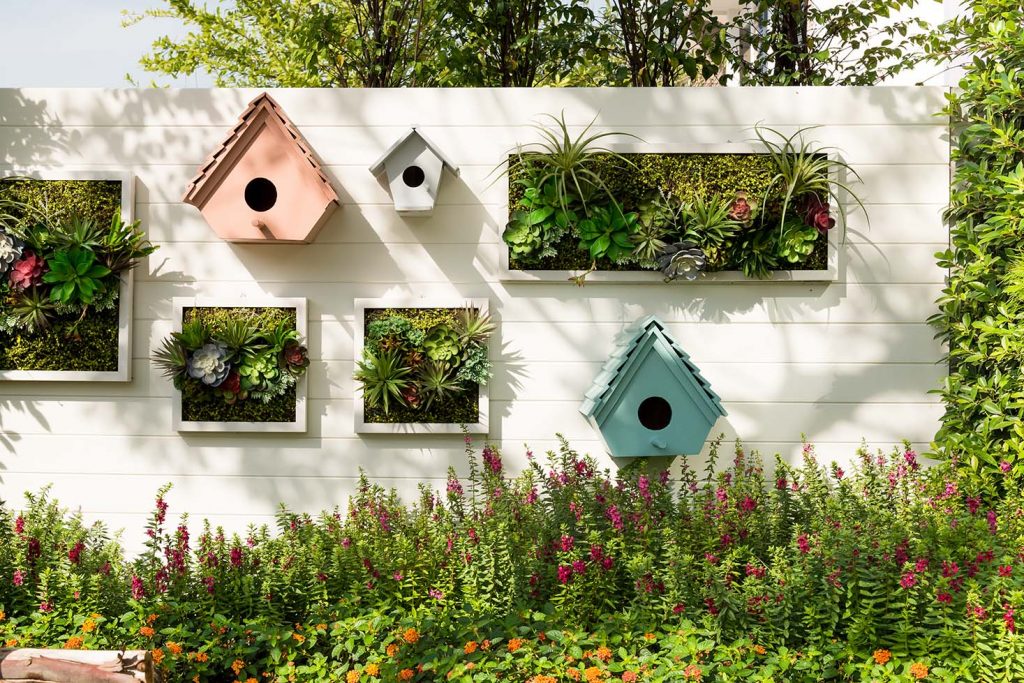
Inspired to make your own?
Check out this guide to a DIY home vertical garden.
Main image via Adobe Stock

